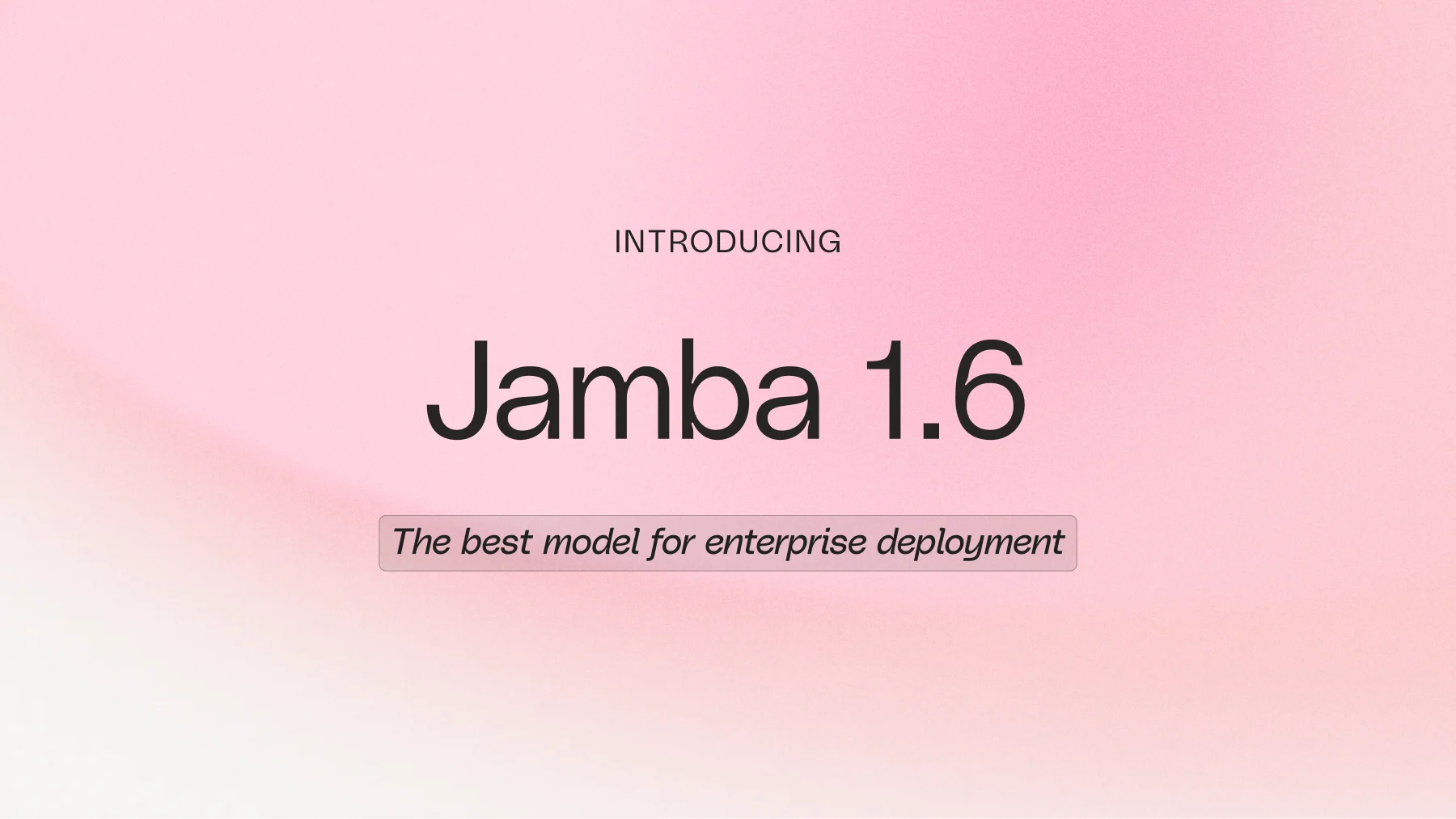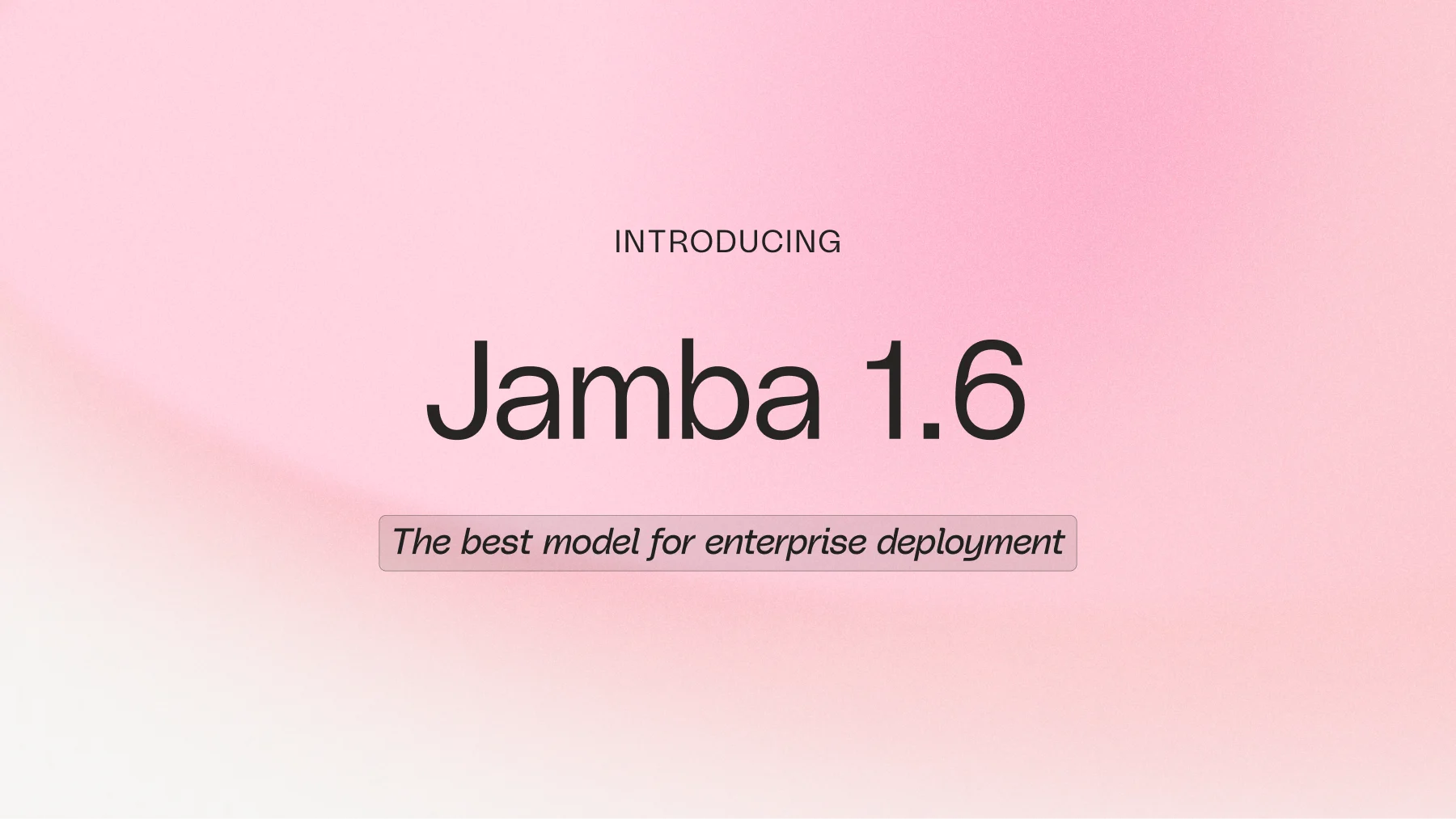
Table of Contents
Overview
In the ever-evolving landscape of AI, businesses are constantly seeking powerful and adaptable tools to streamline operations and gain a competitive edge. Enter Jamba 1.6, the latest open-source language model from AI21 Labs. Designed specifically for enterprise applications, Jamba 1.6 boasts an impressive 256K token context window and a unique hybrid architecture, making it a compelling option for organizations dealing with large volumes of data and complex NLP tasks. Let’s dive into what makes Jamba 1.6 stand out.
Key Features
Jamba 1.6 is packed with features designed to meet the demanding needs of enterprise environments:
- 256K Context Window: Process and understand exceptionally long documents and conversations, enabling deeper insights and more accurate results.
- Hybrid Mamba-Transformer Architecture: Combines the strengths of Mamba’s state-space modeling with Transformer layers for optimal memory efficiency and computational speed.
- Open Source: Benefit from the flexibility and transparency of an open-source model, allowing for customization and community contributions.
- On-Premise/VPC Deployment: Maintain complete control over your data with secure deployment options within your own infrastructure.
- High Throughput and Efficiency: Process large volumes of data quickly and efficiently, minimizing latency and maximizing productivity.
- Enterprise-Grade Capabilities: Built from the ground up to meet the stringent requirements of business-critical applications.
How It Works
Jamba 1.6 leverages a sophisticated hybrid architecture to achieve its impressive performance. It cleverly integrates Mamba’s state-space modeling, which excels at handling long sequences, with traditional Transformer layers. This fusion allows Jamba 1.6 to process extensive data sets with remarkable efficiency while maintaining high accuracy. The model is specifically engineered to handle large-scale enterprise data securely and effectively, making it well-suited for on-premise environments where data privacy is paramount.
Use Cases
Jamba 1.6’s capabilities make it a versatile tool for a variety of enterprise applications:
- Enterprise Document Summarization: Condense lengthy reports, contracts, and other documents into concise summaries, saving time and improving comprehension.
- Legal and Compliance Analytics: Analyze legal documents and regulatory filings to identify potential risks and ensure compliance.
- Conversational AI for Customer Support: Develop intelligent chatbots that can handle complex customer inquiries and provide personalized support.
- Internal Knowledge Management: Create a centralized repository of knowledge that can be easily searched and accessed by employees.
- Advanced Search and Retrieval Tasks: Quickly and accurately find relevant information within large databases and document repositories.
Pros & Cons
Like any AI tool, Jamba 1.6 has its strengths and weaknesses. Let’s break them down:
Advantages
- Long context support enables processing of extensive documents.
- High performance ensures fast and accurate results.
- Flexible deployment options cater to different infrastructure needs.
- Open source nature allows for customization and community contributions.
- Strong enterprise focus ensures it meets the needs of business-critical applications.
Disadvantages
- Requires significant computational resources for optimal performance.
- Still emerging ecosystem, meaning less readily available support and resources.
- Less community support compared to more established models.
How Does It Compare?
When considering language models for enterprise use, it’s important to understand how Jamba 1.6 stacks up against the competition.
- GPT-4: While powerful, GPT-4 is proprietary and offers less customization compared to Jamba 1.6.
- Claude 3: Claude 3 excels in reasoning, but its context window is shorter than Jamba 1.6’s.
- Mistral: Mistral is another open-source option, but it’s less specifically tailored for enterprise deployment than Jamba 1.6.
Final Thoughts
Jamba 1.6 represents a significant step forward in open-source language models for enterprise applications. Its impressive context window, hybrid architecture, and focus on secure deployment make it a compelling option for organizations seeking to leverage the power of AI while maintaining control over their data. While it requires significant computational resources and has a smaller community compared to some competitors, its unique features and enterprise-grade capabilities position it as a valuable tool for businesses looking to innovate and gain a competitive advantage.

